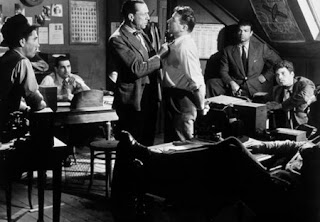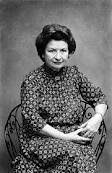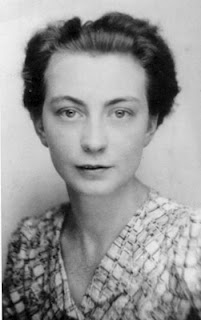Into the cold?
John Le Carre's magisterial Smiley's people concludes the Quest for Karla trilogy. I've always loved Le Carre's Cold War spy stories, but have had a job deciding on my favourite. For years, A perfect spy has topped my list, more recently Tinker, Tailor has provided close competition, and I was unexpectedly wowed by The honourable schoolboy. But, as far as spy stories go, you can't get much better than Smiley's people; which probably explains why it's made it on to the list of 1,000 books to read before you die.
The sole negative is that this is definitely the last book in a series. You could read it without reading Schoolboy (although it makes rather more sense if you do), but a previous reading of Tinker, Tailor, is, I believe, essential. That aside it's brilliantly written, and will keep its reader glued to the page (till 4 am in my case! Thank goodness I was on holiday).
When a defector comes to a sticky end in London, his former case officer, George Smiley, is dragged out of retirement to clear up any loose ends. Smiley, however, soon stumbles across a piece of string that is going to lead all the way to Karla, his former nemesis, and this time Smiley is going to follow through to the bitter end....
Reading Tinker, Tailor is essential, because what is so brilliant about Smiley's people is the way in which Le Carre turns the story on its head. In Tinker, Karla, the Russian intelligence chief, is portrayed as a fanatic. Fanatical about his party, his politics, his country, his allegiance to the Soviet way of life. It's this fanaticism that Smiley prophesies will eventually lead to his downfall. Smiley, on the other hand is very British, likeable, somewhat emotional, estranged from his beloved wife, the wayward Ann, vulnerable, and loyal to both his country and Ann, despite being aware of their faults. He is the antithesis of the rigid hardline Karla; an unlikely hero, that any reader will love.
In Smiley's people however, it will indeed be Karla's fanaticism that will lead him into Smiley's hands, but not his loyalty to his party or his politics or his country, but his love for his daughter. As Karla's humanity is revealed, Smiley's starts to slip away, and the two spy chiefs are revealed as two sides of the same coin.
There are lovely little nudges throughout the novel towards other famous literary heroes and villains. Karla is referred to as Smiley's Moriarty, so it is no surprise that a chunk of the novel should be played out in Switzerland, not that far from the Reichenbach Falls, in Berne - the home of Le Carre's own brief involvement with British intelligence.
This novel manages to be both a spellbinding thriller that moves at a great pace, but also a deeply moving and at times troubling read. Written in 1979, it was still the height of the Cold War; that the Berlin Wall would crumble in just 10 years would have seemed unimaginable at the time. I think reading it in 1979 would have made it an even more uncomfortable read, as Le Carre asks what really does differentiate the spies? Are East and West in essence, that different?
November marks the 25th anniversary of the fall of the Berlin Wall. A great way to celebrate would be to read Smiley's people. Not only does it brilliantly portray the Cold War, the final set-piece crossing from East to West Berlin can't be bettered for portraying those bleak, cold times.
The sole negative is that this is definitely the last book in a series. You could read it without reading Schoolboy (although it makes rather more sense if you do), but a previous reading of Tinker, Tailor, is, I believe, essential. That aside it's brilliantly written, and will keep its reader glued to the page (till 4 am in my case! Thank goodness I was on holiday).
When a defector comes to a sticky end in London, his former case officer, George Smiley, is dragged out of retirement to clear up any loose ends. Smiley, however, soon stumbles across a piece of string that is going to lead all the way to Karla, his former nemesis, and this time Smiley is going to follow through to the bitter end....
Reading Tinker, Tailor is essential, because what is so brilliant about Smiley's people is the way in which Le Carre turns the story on its head. In Tinker, Karla, the Russian intelligence chief, is portrayed as a fanatic. Fanatical about his party, his politics, his country, his allegiance to the Soviet way of life. It's this fanaticism that Smiley prophesies will eventually lead to his downfall. Smiley, on the other hand is very British, likeable, somewhat emotional, estranged from his beloved wife, the wayward Ann, vulnerable, and loyal to both his country and Ann, despite being aware of their faults. He is the antithesis of the rigid hardline Karla; an unlikely hero, that any reader will love.
In Smiley's people however, it will indeed be Karla's fanaticism that will lead him into Smiley's hands, but not his loyalty to his party or his politics or his country, but his love for his daughter. As Karla's humanity is revealed, Smiley's starts to slip away, and the two spy chiefs are revealed as two sides of the same coin.
 |
| Karla coming in from the cold. Patrick Stewart (Karla) and Alec Guiness (George Smiley) in the BBC adaptation of Smiley's People |
This novel manages to be both a spellbinding thriller that moves at a great pace, but also a deeply moving and at times troubling read. Written in 1979, it was still the height of the Cold War; that the Berlin Wall would crumble in just 10 years would have seemed unimaginable at the time. I think reading it in 1979 would have made it an even more uncomfortable read, as Le Carre asks what really does differentiate the spies? Are East and West in essence, that different?
November marks the 25th anniversary of the fall of the Berlin Wall. A great way to celebrate would be to read Smiley's people. Not only does it brilliantly portray the Cold War, the final set-piece crossing from East to West Berlin can't be bettered for portraying those bleak, cold times.










Comments